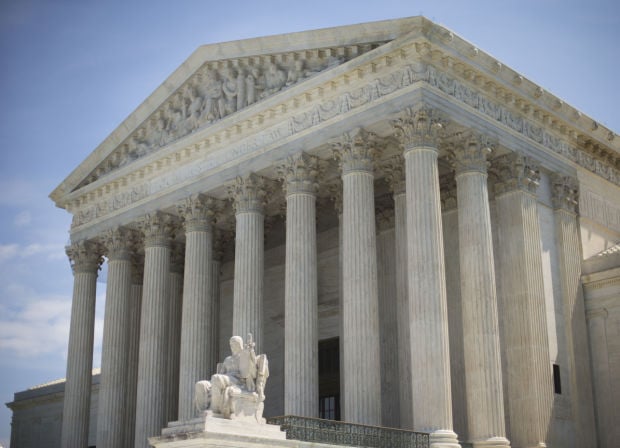PHOENIX — An attorney for a Phoenix family is asking the nation’s high court to effectively require TV stations to use tape delay when broadcasting events that could end in violence.
David Abney is arguing to the U.S. Supreme Court he should be allowed to argue to a jury that Fox News was negligent in the live national broadcast of a police chase that ended with the driver getting out of his vehicle and shooting himself in the head. Abney said Fox had delay capability but chose not to use it.
More to the point, Abney wants the justices to conclude that any First Amendment right Fox has to inform the public disappeared when the situation moved from news the public needed to know about the chase to the “morbid and sensational,” saying much of what passes for news is little more than “infotainment.”
Abney’s interest is more than academic. He represents the children of the man who killed himself, suing for what he said is the intentional infliction of emotional distress.
They did not see it live. But having heard about the event the two oldest children searched the Internet and found the clip.
“As they watched, they realized in horror that they were watching their father,” Abney said in his petition to the court.
State courts threw out his lawsuit, ruling the chase was a matter of public concern protected by the First Amendment.
“Requiring a broadcaster covering a matter of public concern to cut away whenever a violent or disturbing sight may be caught on camera, or to avoid broadcasting such a scene by use of a split-second tape delay, would chill the broadcaster’s news coverage to a degree the First Amendment does not permit,” wrote Diane Johnsen for the state Court of Appeals.
Abney is hoping to convince the Supreme Court to take up the issue.
“No judicial decision controls what protection the First Amendment provides for television broadcasters in the risk business of broadcasting live events where mayhem and death are likely at any instant,” he wrote in his petition to the justices. And Abney is suggesting to the court that this is not just about what is traditionally considered “news.”
“In a time when tasteless infotainment broadcasts of scandalous, unpleasant, and sometimes gruesome images are flourishing, this petition raises important First Amendment issues of first impression that only this court is capable of resolving on a national level,” he wrote.
The case involes a lawsuit brought by Angela Rodriguez on behalf of her three minor children who in 2012 saw the video of their father JoDon Romero, getting out of the vehicle he stole at gunpoint after an 80-mile chase at speeds exceeding 100 mph. He put the gun to his head and shot himself.
The local Fox affiliate had stopped the broadcast ahead of the shooting. But the network kept the feed on live TV and the video eventually was posted on YouTube. That’s where the children, curious about the incident, first learned the dead man was their father.
Abney, in the petition he filed with attorney Joel Robbins, is not attempting to say that TV stations do not have a First Amendment right.
Instead, he is trying to convince the court that what Fox broadcast does not fit within that protection, saying there is no protected expression in accidentally transmitting images of the suicide itself.
“When Fox News broadcast the suicide images, it was not presented opinions on suicides or police chases, or communicating views about any issue of public interest,” Abney told the court.
He said Fox has admitted it did not intend to air the suicide, even citing the fact that Shepard Smith, who was hosting the show at the time, repeatedly said “get off” to try to get the network to drop the live feed. Smith subsequently apologized on air.
“Apologies aside, the trouble was that Fox News’ technicians negligently failed to use reliable and available video-delay technology, although the local Fox News affiliate used the same technology to block the suicide images from its local broadcast,” Abney wrote.
He also is trying to convince the court to differentiate between the fact of the suicide, which he said is newsworthy, there was no need to broadcast the image. Abney compared it to executions where while television broadcasts are forbidden, reporters can convey what they saw.
“There was no First Amendment expressive value in broadcasting images of an obscure, desperate man taking his own life,” Abney wrote.
In defending Fox, attorney David Bodney said there is no right to sue when a station broadcasts truthful information on a matter of public concern.





